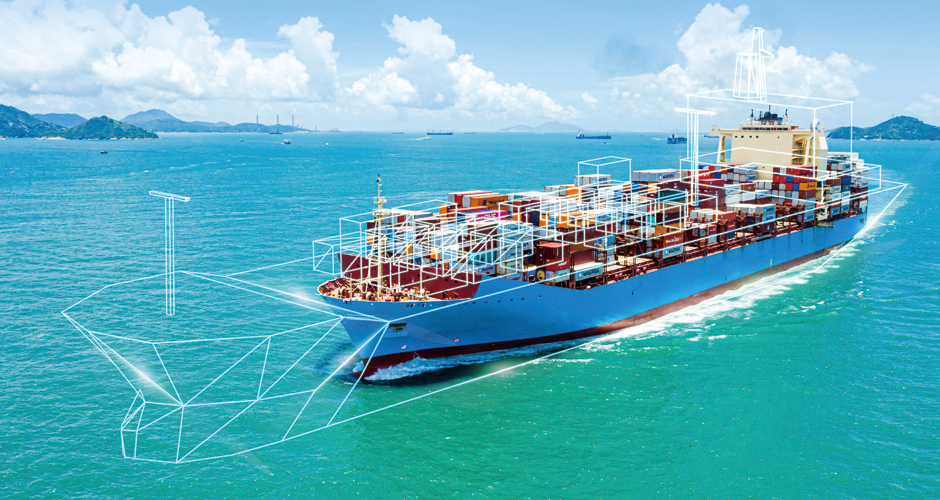 24th December 2021
24th December 2021
A ten-year downturn in shipbuilding has been reversed during the last 18 months by the sustained rise in freight rates for containers, provided carriers with a war chest to buy new vessels.
Clarkson Research is now reporting that the total global volume of new orders for containerships based on gross tonnage is the largest since the agency started tallying the market in 1996. The volume is reported to be about 12 times the total volume of new orders placed during the first three quarters of 2020. Further, the orders have now exceeded the last boom cycle in 2007.
The order book as a share of existing fleet capacity has recovered from the lowest level in more than three decades. Since early October, orders for new container ships have increased by 115 vessels, adding more than 1.1 million TEUs to the global fleet. With other vessels on order the total capacity on order to about 2.7 million TEUs, or almost 12 percent of the existing fleet.
With disrupted sailing schedules and port congestion likely to continue in the medium term the move to ordering containerships in the 7,000 to 16,000 TEU range provides shipping lines with the flexibility to move vessels from one trade lane to another.

The priority in recent years by the major line haul operators has been to build 24,000 TEU vessels to benefit from the economies of scale. However, the challenges posed during the pandemic such as port congestion, container shortages and delays, means that the smaller vessels are now in demand.
However, Peter Sand, chief shipping analyst at Bimco, said that he thought that ultra large ships are here to stay. “You should not expect much change on that account, as ultra-large container ships are the preferred choice of ‘weapon’ in the arms race of the container shipping industry seeking to improve long-term profitability,” he told the Financial Times.
Larger ships help operators to benefit from economies of scale, reducing costs and emissions he added.
Delays inland due to truck driver shortages and a lack of warehousing space have also led to a build-up of containers on the waterfront which will also mean that smaller vessels, with a quicker turnaround time will be able to load and unload containers and help alleviate the build-up of containers.
The world’s largest shipbuilding nation is China which provides a good barometer for future orders. The Chinese Association for the National Shipbuilding Industry said that the global annual ship transaction volume will exceed 90 million dwt in 2021.
Li Yanqing, CANSI Secretary General said that the strength of data indicators such as the Baltic Dry Bulk Index, which recorded a strong increase in rates and the strong growth in freight rates for containers.
CANSI reported that the country’s shipbuilders received orders for 28.39 million dwt so far in 2021, which amounted to more than 40 percent of the total orders placed during the period. They said Chinese yards delivered 23.18 million dwt in the first half of 2021 both for domestic and international shipowners, which was more than 47 percent of the total ships delivered in 2021.
With the rate of orders exceeding production, the Chinese shipbuilding industry is also building its orderbook and backlog. Orders exceeded deliveries by 210,000 dwt in the first half of 2021. The total for all the executed orders currently stands at 80.96 million dwt.
China State Shipbuilding Corp (CSSC) also highlighted the dramatic growth in orders for containerships. “Our orders for container vessels, especially those for 16,000- and 17,000-TEU ships, doubled compared with the same period last year,” said Zheng Wei, Vice-President of CSSC-Dalian Shipbuilding Industry Co.
CSSC highlighted that containership orders so far in 2021 have matched the number of vessels ordered for the whole of last year, while COSCO highlighted orders for more than 20 bulk carriers and container vessels it received for its joint venture with Japan’s Kawasaki Heavy Industries. COSCO said that its production capacity is full by the beginning of 2024.
The global economic recovery is continuing, even as the pandemic resurges. Life in much of the world is likely to return to normal next year – at least, the post-pandemic normal. True, there will be local and seasonal flare-ups of Covid-19, especially in chronically under vaccinated countries. But over the coming years, COVID will probably become an endemic disease, like flu or the common cold.
Despite temporary global trade disruptions, trade volumes are expected to grow almost 10 percent in 2021, moderating to about 7 percent in 2022 – in line with the projected broader global recovery. Trade growth is projected to moderate to about 3.5 percent over the medium term according to The International Monetary Fund World Economic Outlook Report (October 2021).
In the light of increased demand for container shipping, healthy forecasts for container volumes and high demand for more flexibility in global trade routes, many shipyards in China, Japan and South Korea received an increase in orders from ship owners. The impact with more flexibility in ship capacity also means that ports with higher productivity and efficiency via technology, less disrupted by labour shortages and customised value-added services will benefit most.